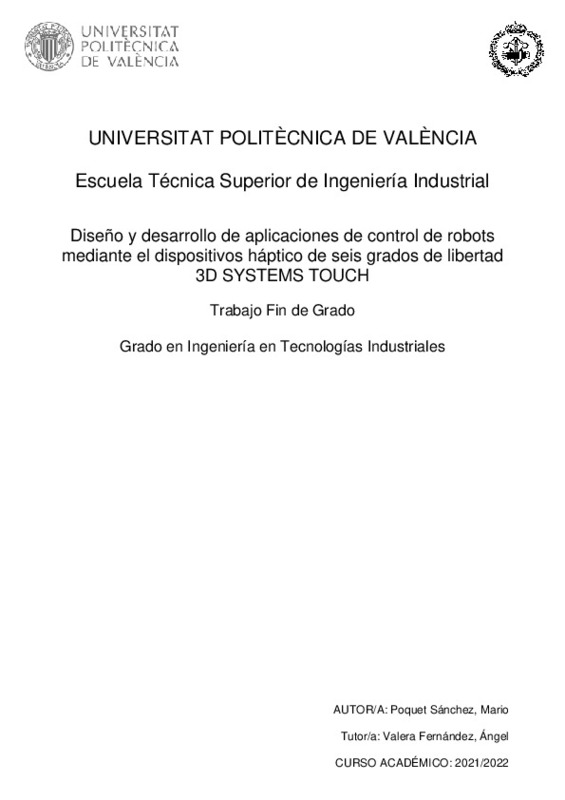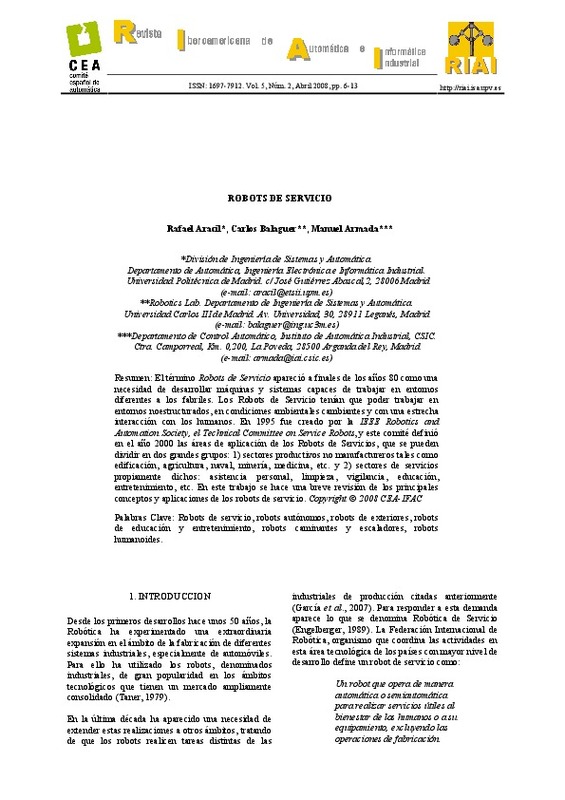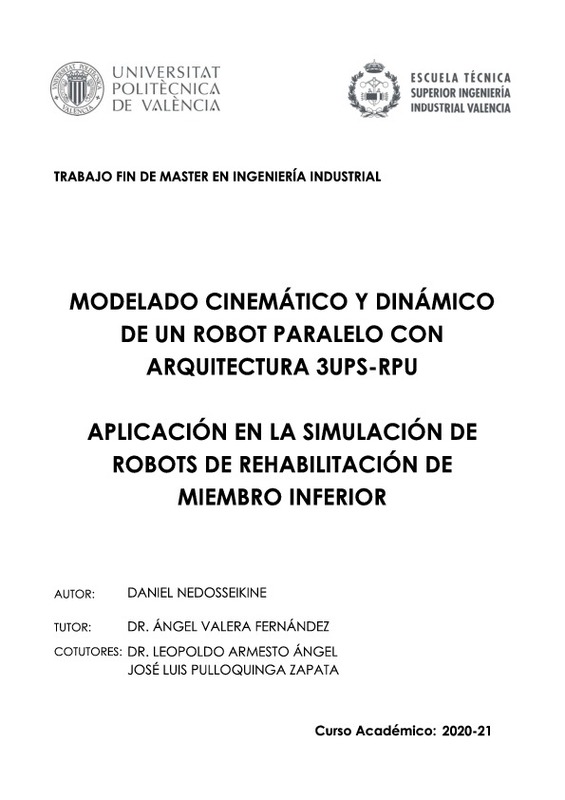JavaScript is disabled for your browser. Some features of this site may not work without it.
Buscar en RiuNet
Listar
Mi cuenta
Estadísticas
Ayuda RiuNet
Admin. UPV
Diseño y desarrollo de aplicaciones de control de robots mediante el dispositivos háptico de seis grados de libertad 3D SYSTEMS TOUCH
Mostrar el registro completo del ítem
Poquet Sánchez, M. (2022). Diseño y desarrollo de aplicaciones de control de robots mediante el dispositivos háptico de seis grados de libertad 3D SYSTEMS TOUCH. Universitat Politècnica de València. http://hdl.handle.net/10251/187930
Por favor, use este identificador para citar o enlazar este ítem: http://hdl.handle.net/10251/187930
Ficheros en el ítem
Metadatos del ítem
| Título: | Diseño y desarrollo de aplicaciones de control de robots mediante el dispositivos háptico de seis grados de libertad 3D SYSTEMS TOUCH | |||
| Otro titulo: |
|
|||
| Autor: | Poquet Sánchez, Mario | |||
| Director(es): | ||||
| Entidad UPV: |
|
|||
| Fecha acto/lectura: |
|
|||
| Resumen: |
[ES] El presente proyecto consiste en la implementación de un dispositivo háptico de seis grados de libertad
en un entorno industrial. De esta manera, se busca poder monitorizar un robot utilizando el dispositivo
háptico ...[+]
[EN] This project consists of the implementation of a haptic device with six degrees of freedom in an
industrial environment. In this way, the aim is to be able to monitor a robot using the 3D Systems
Touch haptic ...[+]
|
|||
| Palabras clave: |
|
|||
| Derechos de uso: | Reserva de todos los derechos | |||
| Editorial: |
|
|||
| Titulación: |
|
|||
| Tipo: |
|
recommendations
Este ítem aparece en la(s) siguiente(s) colección(ones)
-
ETSII - Trabajos académicos [10538]
Escuela Técnica Superior de Ingenieros Industriales










